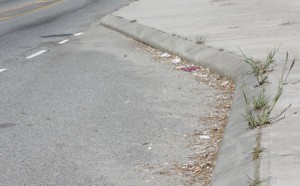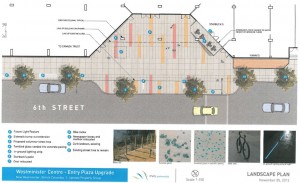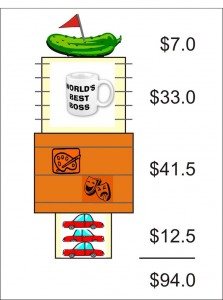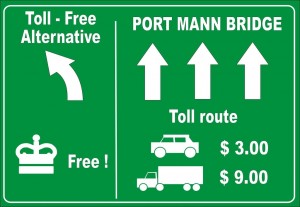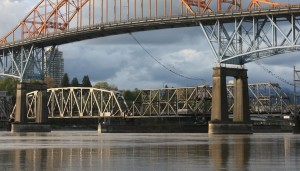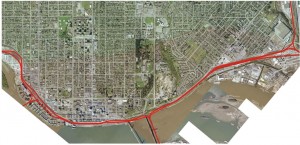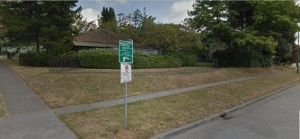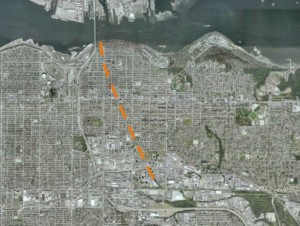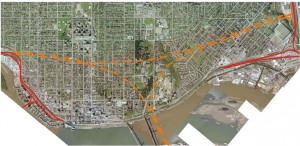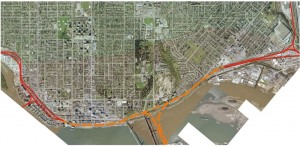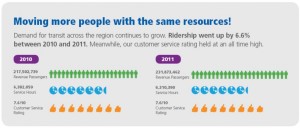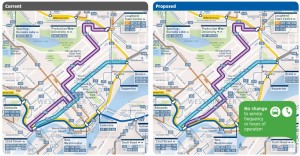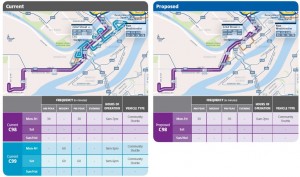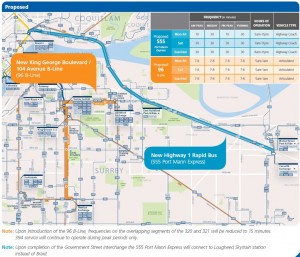It is the time of year when the media take their annual look back at the year in review. As I am enjoying a short vacation (notably in a place a healthy distance south of New Westminster), I am less immersed in every day life and find myself looking back as well, but I’m afraid looking back doesn’t fill me with joy. Instead, I find myself thinking of 2012 as annus horribilis for the issue I am most concerned about: environmental sustainability.
Nationally, that began with Bill C-38. The least open and accountable government in Canadian History (and that is saying something coming out of the Chretien years) created a 425 page “Budget Bill” that featured a dozen pages on budget issues wrapped in a lengthy, complicated, and harmful disassembly of decades of environmental law.
How bad was it?
They ripped the bottom out of the Fisheries Act: the single strongest piece of environmental protection law the country had. This is (was) the law around which all other laws protecting the quality of Canada’s water were structured. The CCME Water Quality Guidelines, the Provincial Fish Protection Act, the Provincial Environmental Management Act, Municipal Riparian Areas Regulations, (and more) are all structured around the basic protections of water quality and habitat protection afforded by the Fisheries Act. The Harper Government(tm) ripped this fundamental law apart so suddenly and inexplicably that even the Government’s own scientists have yet to understand what the loss of habitat protection means. They left the professionals tasked with applying the laws completely in the dark about what the changes mean, while concurrently firing all of the Government staff who might provide the guidance. They did this just before the report from the Cohen Commission was released, knowing full well it was going to suggest that the Fisheries Act needed to strengthen, not weaken, fish protection.That was bad enough, but they did the same thing (again completely without consulting the public, their own scientists, or the practicing professionals working with the regulations) with the Canadian Environmental Assessment Act (reducing by 90% the number of major projects requiring any environmental planning at all). They scuppered the law that made it illegal for them to break an international agreement (The Kyoto Protocol); they opened up the coincidently ice-free arctic to oil and gas drilling while giving the National Energy Board the only power of oversight over this monumental policy change and not actually asking any of the locals; they also gave the National Energy Board the power to deem which species qualify for protection under the Species at Risk Act; disbanded the National Roundtable on Environment and the Economy (because god forbid we have a rational discussion between environmental professionals and industry about developing business responsibly); specifically exempted pipelines from the Navigable Waters Protections Act; along with several other goodies.
All this under the guise of a “Budget”, and all without any public discussion. One might argue the Act went to committee and there was discussion in Parliament before it was passed, and that constitutes “discussion”. However, not a single amendment was made to the original bill as written – 425 pages modifying a dozen other pieces of legislation that fundamentally changed how the environment is protected across the nation, and it was apparently perfect on the first draft, at least according to the Harper Government(tm).
Then, after all the negative press (even the National Post, the Conservative house paper, called the Omnibus Bill “Illegitimate” and spoke of “fundamental issues of Parliamentary government”), after the outcry from the opposition, former Parliamentarians from both sides of the aisle, and the public, the Harper Government(tm) doubled down with Bill C-45, which further reduced protection of lakes and rivers in Canada, causing the government to shirk it’s constitutionally-mandated responsibility (in other words, Provinces cannot even legallly step in an provide the protection the Feds have stripped).
Aside from Omnibus nuke-the-environment bills, the Federal government has also made some dubious decisions regarding our nation’s ability to protectant exploit its non-renewable resources. They continue to float the idea of signing a free trade agreement with China which doesn’t specifically permit Chinese-owned companies to operate in Canada without following Canadian environmental laws, but it may allow them to sue the Canadian Taxpayers for lost profit caused by following those laws. The race to the bottom has never been so clear.
I’m not as concerned as some about the Nexen takeover by CNOOC, but when you combine that takeover with the increasing interest in Canadian hydrocarbons from state-owned oil companies from Japan to Korea to Malaysia, one has to wonder if Canada is the only nation that is specifically exempt from owning Canadian Oil and Gas. Yes, I am going there: It is time for National Energy Program 2. If all of our customer countries are doing it on our own soil, it is getting tough to argue it will make us uncompetitive…
However, the Harper Government(tm) doesn’t want to openly discuss these important issues any more than they want to discuss changes in the Fisheries Act.
“In spite of all the very important deals and the billions of dollars of contracts we signed this week, more people in Canada will notice the pandas than anything else.” —Stephen Harper to Bo Xilai during a trip to China.
The 2012 story was not much better locally in New Westminster.
The opening of the replacement Port Mann Bridge produced the centre-piece for the $5 Billion subsidy to unsustainable urban planning that is the Gateway Program. Assuring that car-oriented development, traffic quagmires, air pollution, and erosion of livability will continue South of the Fraser of another generation. The minor damage done to a couple of dozen cars by falling ice is an irrelevant distraction compared to the long-term damage that bridge will do to our City.
Especially when put into the context of the ongoing standoff over TransLink funding, where our idiotic-looking Provincial Government is battling the moronic-acting Mayors’ Council over 0.6% of that amount of money to keep our Regional Transit System operating at it’s current level of service. The idea of growing the Transit System to meet the needs of the growing community, and the growing number of people actually using the already inadequate system, is apparently off the table for now. Instead of addressing this issue, the Mayors of our biggest communities bitch and grumble over which rapid transit line should be built next, while ignoring the fact that the one promised to the Northeast Sector almost 20 years ago has still not been built! We can build three freeways at the same time in BC, but ask the same people to build two transit lines at the same time, and that is apparently beyond our engineering capacity.
Meanwhile, the Left Coast of Canada is quickly becoming the new Persian Gulf, as the only industry our Governments deem worthy of investment is the putting of hydrocarbons (be they coal, bitumen, or methane) onto boats to ply the stormy seas of volatile international energy markets. Considering what our planned contributions to Greenhouse Gas Emissions are from these projects alone, I hope they’re building those ports well up the hill from today’s tidewater.
Cazart.
Despite all of this, there was some good news. Despite the Harper Government(tm) attempts to derail all environmental oversight, the push-back over the Enbridge Northern Gateway and Kinder Morgan Pipelines are aligning disparate citizens’ groups toward a common cause: assuring their is environmental oversight and public discussion of major projects, even if the Government doesn’t want it. As a result, the ongoing coordinated media blitz between the Oil and Gas Industry, the Provincial and Federal Governments, is being seen for what it is: a cheap sales job paid for by taxpayers to sell them an idea that might be a bad one for them (even if it is a good one for the oil companies eking the last bit of profit out of their 20th Century business models).
These projects, and the failure of the Federal Government in its constitutional responsibilities, are leading to what may turn out to be the most important national political action by First Nations since Elijah Harper held a feather up to Meech Lake. The epicentre may be Attawapiskat, but the real battle will be in Ottawa and Kitimat, and it refreshes me to know that the one group in Canada that has so consistently been marginalized by official proclamation will be Idle No More.
Locally, things are also looking up. TransLink’s rush to expand the Pattullo Bridge has slowed down as they seek more consultation from New Westminster and Surrey, and they re-assess their budget and the alleged need for more bridge capacity connecting King George to McBride. Meanwhile, New Westminster’s Master Transportation Plan consultations showed the people in New Westminster want the City to set aggressive goals towards reducing traffic load on our City, and with EnVision2032, City Hall is taking steps to integrate Sustainability into all future City planning and activities.
however, if There was one dominant “Good News” story for the Environment in this annus horribilis, it was the emergence of Elizabeth May, Parliamentarian. Every day she was in the House (and she was there every day it sat), she demonstrated what a Member in a parliamentary representative democracy should be. She proved that a lone member from a fringe party can represent, and that perhaps it is time for us to stop relying on the “established” parties to represent us, when they really only represent their party, when instead we should be choosing the individual who will fight the good fight in the House.
You should read the speech excerpted in that link above. It is a compelling plea for democracy and the traditions of parliament that once made Canada a model for the world, a place where rule of law, honest discussion and diplomacy was the way to solve problems. Where people didn’t need to fight for our freedoms, but negotiated them like civilized people. People often forget our nation confederated over a table, we didn’t fight a bloody revolution. We did all of our fighting for freedoms in other countries, like France and the Netherlands and Korea and Cyprus and Bosnia, hoping that others would enjoy the freedoms we won through peaceful negotiation. Here at home, compromise and understanding were not evils to be avoided, but were the way we got things done. And I’m proud of the country that approach built…
…but I may be getting ahead of myself a bit here. We lost some things in 2012, I’m not sure if we will know their impact for years to come, but Canada is still here, and BC is still here, and New Westminster is still here, and they are still the best places to live (in my sometimes-humble opinion).
So for the environment, 2012 was annus horribilis. As a proud Canadian, that only renews my energy and drive to do better in 2013.
Happy New Year.
